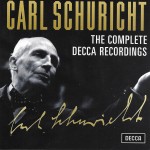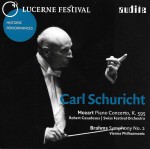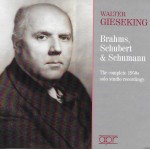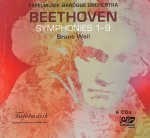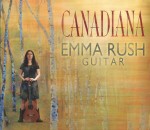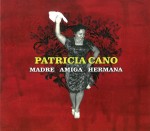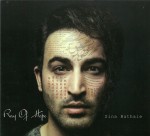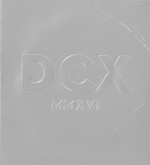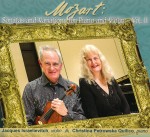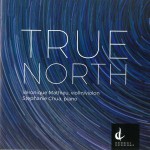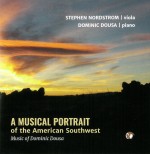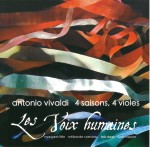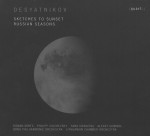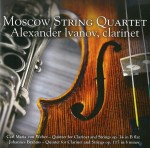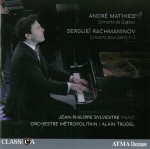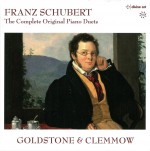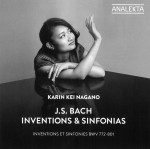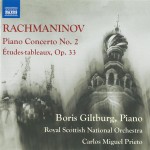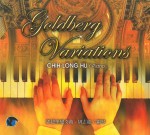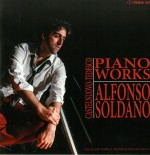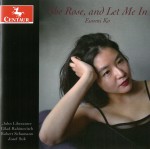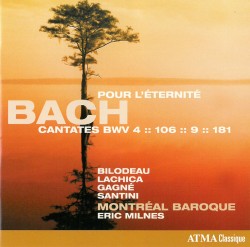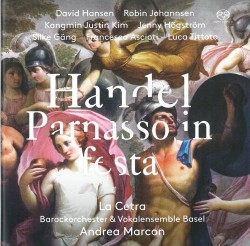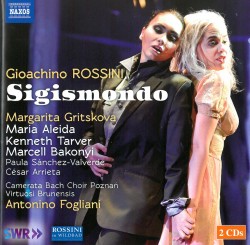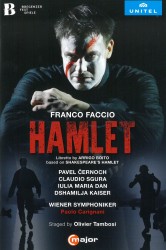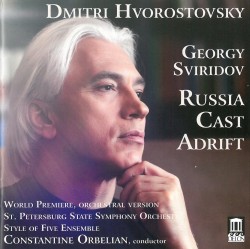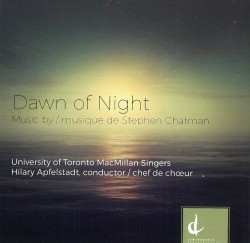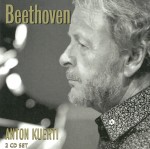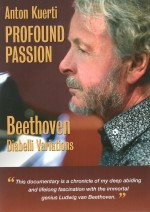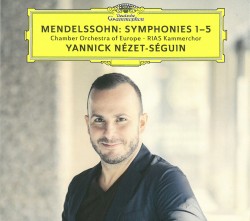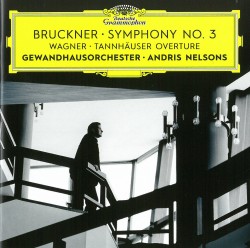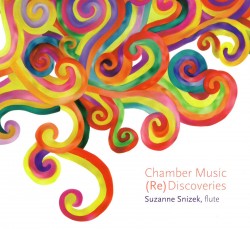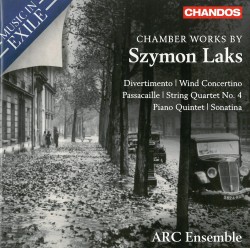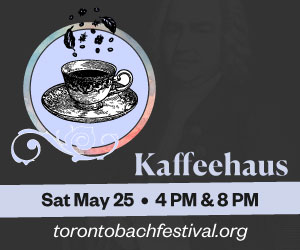Something in the Air | An Added Ingredient for Integrated Improvisation - November 2017
Sympathetic dynamics and mutual compatibility are attributes ascribed to notable musical groupings. That’s why so many are made up of players from the same country or even the same region: think of the Budapest String Quartet, Liverpool’s The Beatles or the New York Jazz Quartet. But as music becomes more global this nationalism is increasingly rare. Here are CDs whose direction has been changed – or not – by adding a foreign player to an existing local combo, by creating a new entity with one expatriate element, or when players from various national backgrounds root themselves in one place.
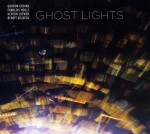 Judging from the results on Ghost Lights (Songlines 1621-2 songlines.com), French pianist Benoît Delbecq joining the Vancouver-based trio of clarinetist François Houle, guitar and oud player Gordon Grdina and percussionist Kenton Loewen was more like mixing two complementary compounds than introducing an unstable element to a scientific formula. That’s because the Houle/Grdina/Loewen trio has been together since 2014, while the clarinetist and keyboardist have worked as a duo since 1996. Delbecq’s familiarity with non-Western scales coupled with Loewen’s skill on the Arabic lute give pieces such as Ley Land and especially Soft Shadows an Eastern cast. Ley Land’s moody and crepuscule feel is further advanced by slurred string fingering and Houle’s chalumeau slurps. Meantime Soft Shadows’ Eurasian tinge is intertwined with minimalist tones as organ-like drones from processed loops create a continuum. Placing a wispy reed narrative atop sharp guitar lines, percussion shuffles and restrained pianism as on Ghost Lights only works for so long. Like a dainty tiara perched on a massive head of hair the wrong movement can upset the balance. Luckily equilibrium is maintained due to contralto clarinet cries matched with modulated piano tones. The CD’s most jazz-like piece is Gold Spheres which evolves into a suite of multicoloured, almost Africanized tinctures. Ghostly and atmospheric via reed snarls and plucked inner piano strings, the wavering theme is both percussive and succoring. Underlying harshness is relieved with slurred guitar fingering while the quartet demonstrates perfect control of the material, since neither this timbral softening nor the preceding firmness prevents the tune from attaining a notable finale.
Judging from the results on Ghost Lights (Songlines 1621-2 songlines.com), French pianist Benoît Delbecq joining the Vancouver-based trio of clarinetist François Houle, guitar and oud player Gordon Grdina and percussionist Kenton Loewen was more like mixing two complementary compounds than introducing an unstable element to a scientific formula. That’s because the Houle/Grdina/Loewen trio has been together since 2014, while the clarinetist and keyboardist have worked as a duo since 1996. Delbecq’s familiarity with non-Western scales coupled with Loewen’s skill on the Arabic lute give pieces such as Ley Land and especially Soft Shadows an Eastern cast. Ley Land’s moody and crepuscule feel is further advanced by slurred string fingering and Houle’s chalumeau slurps. Meantime Soft Shadows’ Eurasian tinge is intertwined with minimalist tones as organ-like drones from processed loops create a continuum. Placing a wispy reed narrative atop sharp guitar lines, percussion shuffles and restrained pianism as on Ghost Lights only works for so long. Like a dainty tiara perched on a massive head of hair the wrong movement can upset the balance. Luckily equilibrium is maintained due to contralto clarinet cries matched with modulated piano tones. The CD’s most jazz-like piece is Gold Spheres which evolves into a suite of multicoloured, almost Africanized tinctures. Ghostly and atmospheric via reed snarls and plucked inner piano strings, the wavering theme is both percussive and succoring. Underlying harshness is relieved with slurred guitar fingering while the quartet demonstrates perfect control of the material, since neither this timbral softening nor the preceding firmness prevents the tune from attaining a notable finale.
Review
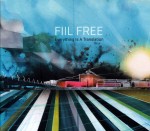 A similar situation is delineated on the aptly-titled Everything is a Translation (Fiil Free Records FFR0916 larsfiil.dk); a suite composed by Danish pianist Lars Fiil and interpreted by the Fiil Free septet of five Danes, Swedish guitarist Henrik Olsson and Polish trumpeter Tomasz Dąbrowski. Composed so that each subsequent track bleeds into the next, the five sequences go through sections of speed and static, Arcadian lulls and aggressive outbursts. Symbolically the session also marks how completely Dąbrowski has integrated Scandinavian ethos. Unlike some showcases where the soloist seems to be jammed on top of the ensemble, the trumpeter’s muted grace notes are present from the first track Why Search for Common Ground, with textures reflecting back onto Fiil’s low-frequency, Lisztian chording and offhanded cracks and swats by drummer Bjørn Heebøll and vibraphonist Martin Fabricius. There’s such bonding that the tempo speeding up and becoming more swinging almost passes unnoticed. Later instances such as a blustering brass call plus piano pumps show how to fearlessly inhabit the groove between hard bop and cool. That piece fades seamlessly into the neo-pastoral title tune, where sour brass whistles in counterpoint to smeared reed lines also don’t upset the narrative flow or detract from the overall beauty. At the same time, since the suite is sturdy and organically constructed to highlight beautiful colours, it never lapses into mere landscaping. To demonstrate its modernity and the versatility of the players, a track like Is It Doubt includes brass shakes and mouthpiece kisses from the trumpeter that keep the relaxed piano and decorative vibraphone narrative from sounding too comfortable.
A similar situation is delineated on the aptly-titled Everything is a Translation (Fiil Free Records FFR0916 larsfiil.dk); a suite composed by Danish pianist Lars Fiil and interpreted by the Fiil Free septet of five Danes, Swedish guitarist Henrik Olsson and Polish trumpeter Tomasz Dąbrowski. Composed so that each subsequent track bleeds into the next, the five sequences go through sections of speed and static, Arcadian lulls and aggressive outbursts. Symbolically the session also marks how completely Dąbrowski has integrated Scandinavian ethos. Unlike some showcases where the soloist seems to be jammed on top of the ensemble, the trumpeter’s muted grace notes are present from the first track Why Search for Common Ground, with textures reflecting back onto Fiil’s low-frequency, Lisztian chording and offhanded cracks and swats by drummer Bjørn Heebøll and vibraphonist Martin Fabricius. There’s such bonding that the tempo speeding up and becoming more swinging almost passes unnoticed. Later instances such as a blustering brass call plus piano pumps show how to fearlessly inhabit the groove between hard bop and cool. That piece fades seamlessly into the neo-pastoral title tune, where sour brass whistles in counterpoint to smeared reed lines also don’t upset the narrative flow or detract from the overall beauty. At the same time, since the suite is sturdy and organically constructed to highlight beautiful colours, it never lapses into mere landscaping. To demonstrate its modernity and the versatility of the players, a track like Is It Doubt includes brass shakes and mouthpiece kisses from the trumpeter that keep the relaxed piano and decorative vibraphone narrative from sounding too comfortable.
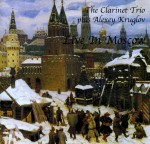 A distinct variation of this add-a-foreign-player appears on Live in Moscow (Leo Records CD LR 781 leorecords.com) where the 15-year-old Berlin-based Clarinet Trio – consisting of Jurgen Kupke (clarinet), Michael Thieke (clarinet, alto clarinet) and Gebhard Ullmann (bass clarinet) was joined by Russian alto saxophonist Alexey Kruglov. Recorded in real time, the CD initially showcases four instances of the trio’s near-telepathic interactions as the members build a collection of layered sonic edifices. In low- or high-frequency elaborations, the sense of perpetual discovery is obvious with Kupke’s bugle-call timbre-stretching, Thieke decorating the themes with jagged glissandi and Ullmann puffing along freight-train-like preserving the bottom. Adding the saxophonist turns the interface more dissonant, but without losing the connective thread. Collective No.9 (Part 1-4) intensifies the reveille-like yaps, squeaking bent notes and foghorn-pitched smears from the clarinets with the saxophonist contributing tongue slaps, reed bites, then builds to a cacophonous crescendo where all four explore the deepest regions of their horns. Yet not only do the four on Kleine Figuren No.2 immediately unite high-pitched glissandi to create peppy, yet comforting harmonies that are almost as tonal as a Christmas carol, the preceding sounds are prelude to the concluding 14-minute-plus News? No News! Perfectly harmonized as a Baroque chamber ensemble, but with finger-snapping energy, they take turns propelling the theme, taking it apart and reconstituting it. Furry slurs from linked alto and bass clarinets suggest a Romantic tone poem, while Kruglov’s jagged and jiggling split tones describe an alternate sound portrait. Finally, a melancholy crescendo of crackling tones is attained and regularized by Ullmann’s rhino-like snorts. The four’s interlaid harmonies end the piece without schism and without sacrificing its cutting edge.
A distinct variation of this add-a-foreign-player appears on Live in Moscow (Leo Records CD LR 781 leorecords.com) where the 15-year-old Berlin-based Clarinet Trio – consisting of Jurgen Kupke (clarinet), Michael Thieke (clarinet, alto clarinet) and Gebhard Ullmann (bass clarinet) was joined by Russian alto saxophonist Alexey Kruglov. Recorded in real time, the CD initially showcases four instances of the trio’s near-telepathic interactions as the members build a collection of layered sonic edifices. In low- or high-frequency elaborations, the sense of perpetual discovery is obvious with Kupke’s bugle-call timbre-stretching, Thieke decorating the themes with jagged glissandi and Ullmann puffing along freight-train-like preserving the bottom. Adding the saxophonist turns the interface more dissonant, but without losing the connective thread. Collective No.9 (Part 1-4) intensifies the reveille-like yaps, squeaking bent notes and foghorn-pitched smears from the clarinets with the saxophonist contributing tongue slaps, reed bites, then builds to a cacophonous crescendo where all four explore the deepest regions of their horns. Yet not only do the four on Kleine Figuren No.2 immediately unite high-pitched glissandi to create peppy, yet comforting harmonies that are almost as tonal as a Christmas carol, the preceding sounds are prelude to the concluding 14-minute-plus News? No News! Perfectly harmonized as a Baroque chamber ensemble, but with finger-snapping energy, they take turns propelling the theme, taking it apart and reconstituting it. Furry slurs from linked alto and bass clarinets suggest a Romantic tone poem, while Kruglov’s jagged and jiggling split tones describe an alternate sound portrait. Finally, a melancholy crescendo of crackling tones is attained and regularized by Ullmann’s rhino-like snorts. The four’s interlaid harmonies end the piece without schism and without sacrificing its cutting edge.
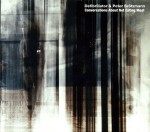 Kruglov’s potential disruptive forces were actually melodiously linked to the Trio’s longtime sound strategy. But an additional element can also push an already dissonant game plan to a strident peak. Consider Conversations About Not Eating Meat (Border of Silence BOS 001 borderofsilence.com). Here the Basel-based Defibrillator trio, made up of Polish brothers Sebastian Smolyn on electronically processed trombone and Artur Smolyn on electronics, plus Berlin-based drummer Oliver Steidle, invite powerful German multi-reedist Peter Brötzmann to record with them. The result could be likened to an aural record of North Korea’s nuclear tests. While a true defibrillator uses electrical shocks to help control arrhythmias, and although Brötzmann’s reed blasts have usually been linked to power from the guts, it’s mostly the trio’s electronic boosts which pump out a blitzkrieg of themes so that obbligatos from the saxophonist sound almost moderato. This aural landscape of industrial noise also gains traction from the trombonist’s extended plunger forays. With the processed oscillations arriving as unexpected as a prolonged power outage in a city’s downtown core, on pieces such as The Man with One Ball and Fuckir Brötzmann’s doggedly straightforward improvising, trombone siren calls and drum bumps cut a path through the swooshing wave forms like a bowling ball scattering pins. Asserting the primacy of human lung power through a combination of multiphonic growls and altissimo screams is further proof of the saxophonist’s skill. In fact, by the climactic Cellulite Guru finale, many of the underlying drones and signal-processed timbral distortions have become so regularized and dampened that Brötzmann’s usual overwrought reed narratives seem as mellow as Sonny Rollins elaborating a tune backed by a conventional rhythm section.
Kruglov’s potential disruptive forces were actually melodiously linked to the Trio’s longtime sound strategy. But an additional element can also push an already dissonant game plan to a strident peak. Consider Conversations About Not Eating Meat (Border of Silence BOS 001 borderofsilence.com). Here the Basel-based Defibrillator trio, made up of Polish brothers Sebastian Smolyn on electronically processed trombone and Artur Smolyn on electronics, plus Berlin-based drummer Oliver Steidle, invite powerful German multi-reedist Peter Brötzmann to record with them. The result could be likened to an aural record of North Korea’s nuclear tests. While a true defibrillator uses electrical shocks to help control arrhythmias, and although Brötzmann’s reed blasts have usually been linked to power from the guts, it’s mostly the trio’s electronic boosts which pump out a blitzkrieg of themes so that obbligatos from the saxophonist sound almost moderato. This aural landscape of industrial noise also gains traction from the trombonist’s extended plunger forays. With the processed oscillations arriving as unexpected as a prolonged power outage in a city’s downtown core, on pieces such as The Man with One Ball and Fuckir Brötzmann’s doggedly straightforward improvising, trombone siren calls and drum bumps cut a path through the swooshing wave forms like a bowling ball scattering pins. Asserting the primacy of human lung power through a combination of multiphonic growls and altissimo screams is further proof of the saxophonist’s skill. In fact, by the climactic Cellulite Guru finale, many of the underlying drones and signal-processed timbral distortions have become so regularized and dampened that Brötzmann’s usual overwrought reed narratives seem as mellow as Sonny Rollins elaborating a tune backed by a conventional rhythm section.
Review
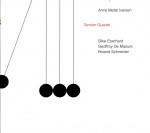 The final variant of our theme involves trombone, saxophone, bass and drums. That’s the configuration of Danish-born Anne Mette Iversen’s Berlin-based Ternion Quartet (Brooklyn Jazz Underground Records BJUR 062 bjurecords.com). Iversen organized the group in 2015 with alto saxophonist Silke Eberhard, percussionist Roland Schneider (both German) and trombonist Geoffroy De Masure (French). Working in classic contemporary fashion with round-robin solos from the frontline firmly grounded by Iversen’s bass pulse and rattling drum beats, the four never stray far from swing. This emphasis on foot-tapping also means that except for the odd cymbal slap and snare clunks on tunes such as Trio One Schneider stays in the background, with the bassist. Overall, the quartet’s most notable work occurs on a trio of tunes placed in the CD’s centre. Debacled Debate gives the trombonist space for vocalized cries, which evolve to bel canto grace notes decorated with twisted trills from Eberhard and a squirming bottom from the rhythm section. Reversing pitch roles, the saxophonist and trombonist extend A Cygnet’s Eunoia by moving brass tones upwards and reed timbres downwards. Slippery smears from Eberhard and bottom burrs from De Masure result in harmonies that join to produce skipping swing. The trombone tone remains in the basement during Escapade #7. But before De Masure and Eberhard engage in some jaunty tune-ending call-and-response she constructs a Dolphyesque solo that’s harsher and more dissonant, but doesn’t upset the tune’s forward motion.
The final variant of our theme involves trombone, saxophone, bass and drums. That’s the configuration of Danish-born Anne Mette Iversen’s Berlin-based Ternion Quartet (Brooklyn Jazz Underground Records BJUR 062 bjurecords.com). Iversen organized the group in 2015 with alto saxophonist Silke Eberhard, percussionist Roland Schneider (both German) and trombonist Geoffroy De Masure (French). Working in classic contemporary fashion with round-robin solos from the frontline firmly grounded by Iversen’s bass pulse and rattling drum beats, the four never stray far from swing. This emphasis on foot-tapping also means that except for the odd cymbal slap and snare clunks on tunes such as Trio One Schneider stays in the background, with the bassist. Overall, the quartet’s most notable work occurs on a trio of tunes placed in the CD’s centre. Debacled Debate gives the trombonist space for vocalized cries, which evolve to bel canto grace notes decorated with twisted trills from Eberhard and a squirming bottom from the rhythm section. Reversing pitch roles, the saxophonist and trombonist extend A Cygnet’s Eunoia by moving brass tones upwards and reed timbres downwards. Slippery smears from Eberhard and bottom burrs from De Masure result in harmonies that join to produce skipping swing. The trombone tone remains in the basement during Escapade #7. But before De Masure and Eberhard engage in some jaunty tune-ending call-and-response she constructs a Dolphyesque solo that’s harsher and more dissonant, but doesn’t upset the tune’s forward motion.
Such coherent playing is an indication not only of the band’s mutual musical understanding, but also marks an instance in which individual nationality is an invisible part of the performance. It’s this connection to which all these ensembles aspire.


